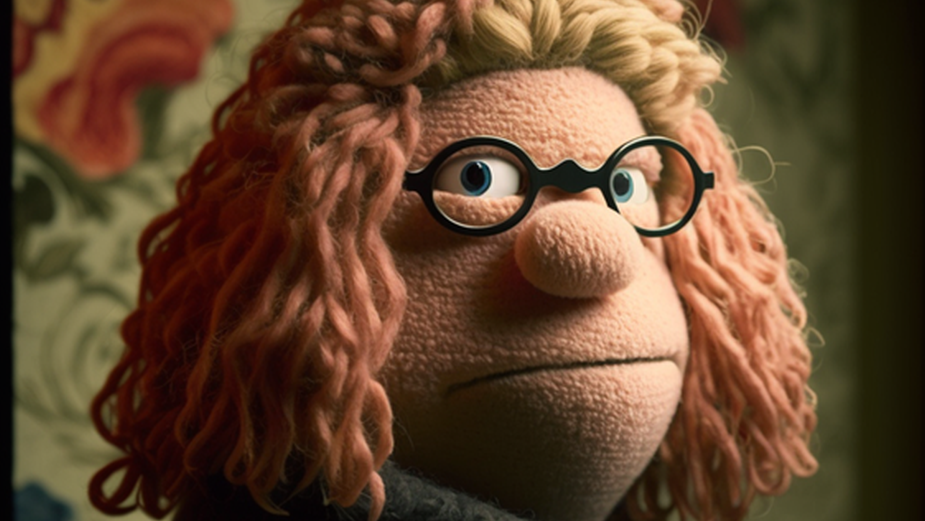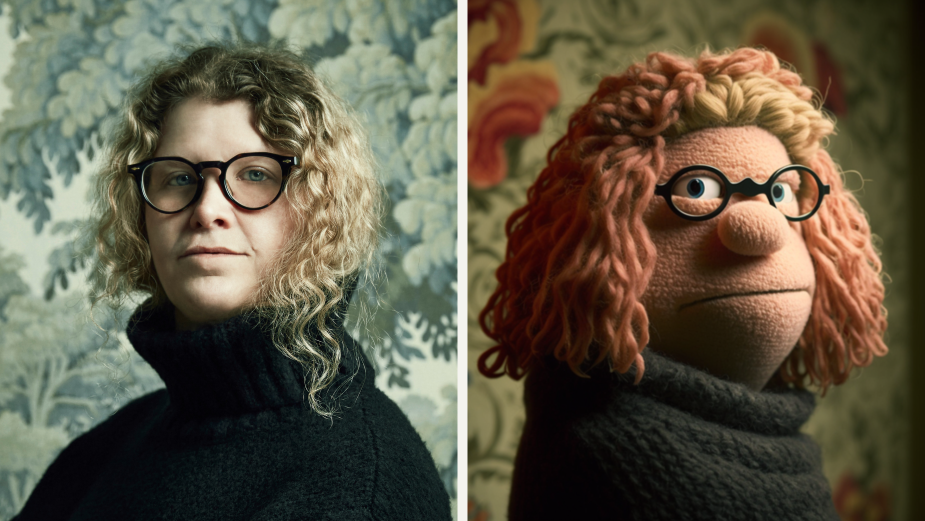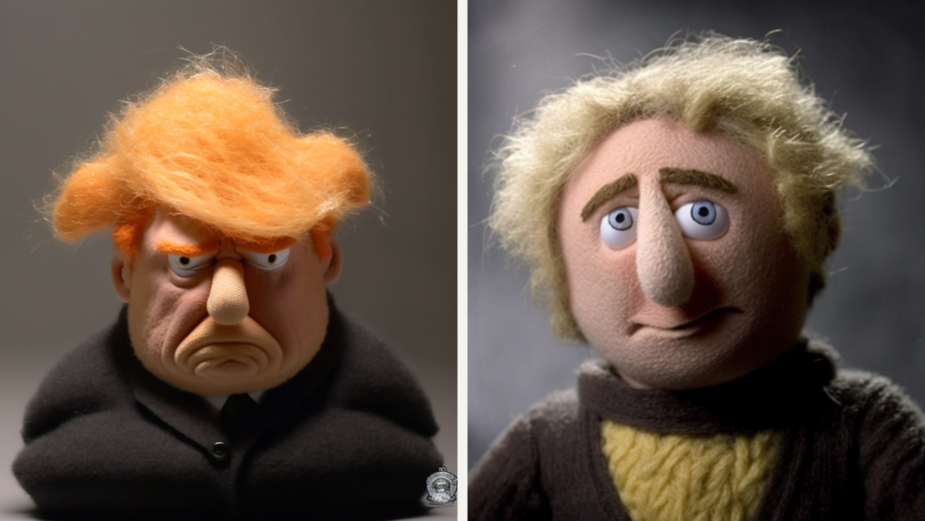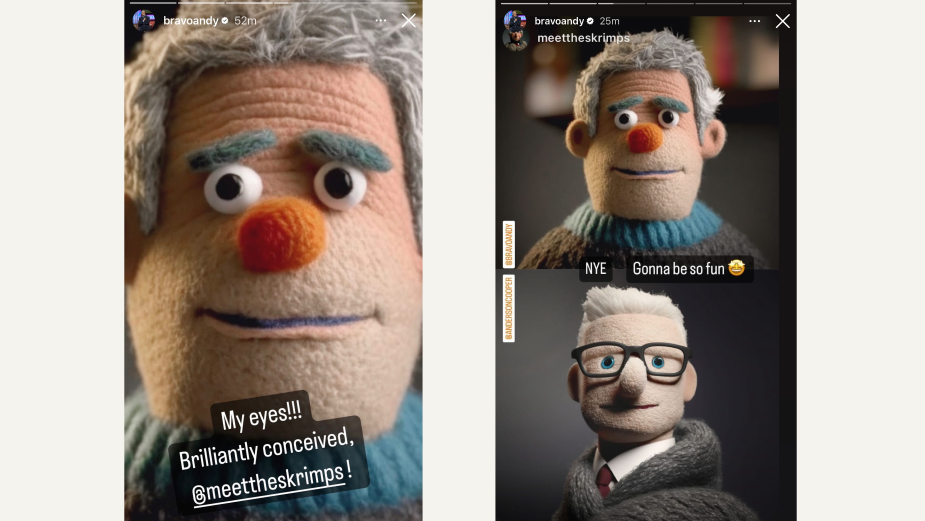
Erin Sarofsky on Overcoming Biases and Shaping the Future with AI

Erin Sarofsky founded motion design studio Sarofsky in 2009, setting out to stand apart from the industry’s traditional post houses. Now a cross-media production company with capabilities in motion design, animation, VFX, editing and finishing, Sarofsky also has a strategic relationship with colour grading experts Nolo Digital Film, and founded its own strategic creative company Sarofsky TBD* last year.
To this day, the company remains rooted in Chicago’s West Loop and is 100% owned by Erin.
And like many creatives and creators, Erin has recently become fascinated by AI. This has resulted in new artificial intelligence tools being used in the Sarofsky workflow, Erin’s personal AI-powered visual art project ‘Meet the Skrimps’, and even an opportunity to share her thoughts on a Female Quotient panel around ‘Elevating Women to Overcome Biased AI’.
Describing her initial AI discussions as ‘far from doomsday conversations’, she says, “I’ve been doing this for over 20 years now, so I've already seen big shifts in our process as new software and hardware has become accessible. The only way forward is to not harp on how things have been done but to play, learn and be open-minded about how this can make us better, more efficient artists.”

Reason to be Alarmed?
Acknowledging that AI will inevitably change how everyone works, Erin adds, “It’s been either a ‘wow, that will make things better, easier, faster’ or a ‘that’s not quite there yet’ conversation… Its alarming nature is quite obvious; creativity being boiled down to a list of keywords can make artists feel not only devalued, but perhaps obsolete. But, for me this is a tool, like a paintbrush or software. It’s how you work the tool into a result that makes the outcome uniquely yours.”
She highlights another concern around generative AI usage - its tendency to produce visuals that “look too AI”, surreal and overly slick images that feel disconnected and inhuman. She explains, however, that this trend of “very-CG feeling” visuals predates the recent rise of platforms like Midjourney, and suggests that going forward, marketing must become more naturalistic and human. This change, she says, is being reflected in other areas of design too, with handcrafted, imperfect elements swiftly gaining popularity.
“What does that mean? Well, to start, we will see more people in content,” she says. “Where it’s not efficient to film live action, we will see the style shift. Things will feel more handmade, colours will skew more naturalistic, typography will get more playful and less stark. We will hear more references like Saul Bass, for his simplistic design that has texture and presence, and collage for its layered maximal look. CG graphics won't go away because products will still need to look immaculate, but it's the environments that surround them that will become less surreal.”
Putting AI to Work
At Sarofsky, Erin has already begun incorporating AI into their production pipeline thanks, in part, to software the team already used. Everything from the selection tool in Photoshop to image enhancement software Topaz is powered by AI, and helps to make the design and VFX processes more fluid for them.
The next step, she says, is for AI products to become more intuitive and effective, transforming everything from the simplest to the most complex tasks. Not to mention the legal reform that’s to come. “The legal system needs to figure out copyright and ownership issues before companies can feel confident using AI. Companies like Adobe have a significant advantage because they have a stock library and AI uses that as its learning model. Because of that, Adobe can also make its generative AI available, similar to how they have incorporated Fonts into the subscription.”
At Erin’s latest venture, Sarofsky TBD*, AI tools - like Midjourney, the Board of Innovation’s AI Toolbox and the online image editor fotor - have also been added to the brainstorming and visual experimentation arsenal.
Meet the Skrimps

[Above: Donald Trump and Gene Wilder Skrimps]
Outside of the office, on the other hand, is where Erin has perhaps seen the most experimentation with AI. This, of course, refers to her visual arts project ‘Meet the Skrimps’, a collection of muppet-inspired characters based on pop culture figures.
After posting the initial results on her socials to a warm reception, she was empowered to experiment further, and collaborated with friend and podcast co-host Austin Shaw to perfect her felted, knitted creature creations. “I began to realise that what you get out of AI is determined by what - expertise, artistic POV, etc.- you put into it,” she says.
“People know me mostly as a designer, director and studio owner, but my hobbies include fibre art and comedy. Those on the inner, inner circle, know I am also quite political. So these little creations are the culmination of my interests. They are so uniquely me, that even with the right prompts, no one but me would be able to direct the AI in this way.”
Launched officially in December 2023, ‘Meet The Skrimps’ has its own website and Instagram page - already amassing over 3,000 followers and shares from the likes of TV presenter Andy Cohen.

“I am still researching why this project is connecting with people, but my take is that it feels so natural and real. There are great expressions. It has humour. It has a point of view. It shows that behind the AI is a person sculpting something they love.”
Through this process, Erin says she’s learned just how essential humanity and insight are to the creative process, and gained a sneak peak into the skills necessary for the creatives of the future; curation, understanding of historical context, knowledge of different mediums and technical jargon, and specificity of artistic intent, to name a few.
“But getting the AI to a result that feels human, or touches a nerve that makes you think for certain a robot didn't make that, is the necessary ingredient,” she says. “It is certainly the ingredient that will either make your work successful or unsuccessful. And for me, I think that’s part of what makes my Skrimps so successful. Some people even assume they are real handmade objects.”
Shaping the AI Future
One challenge that has arisen during the Skrimps project is the biased nature of AI. AI learns from the content you feed it and, as Erin points out, “most of the accessible content is created and curated by men.” As a recent panellist for The Female Quotient’s ‘RaiseHerProfile: Elevating Women to Overcome Biased AI’ talk, she notes that most people may not even be aware of AI’s biases.
Practically speaking, this means that the AI tools she uses can struggle with creating female Skrimps or depicting the diverse range of people in society. “The assumption, no matter what image I work from, is that the result should be male,” she says. “It also assumes women in their 30s look like Estelle Getty on ‘The Golden Girls’ and means that when you ask an AI text tool for a person as a reference, it will likely be a white male… A prompt can be ‘give me a list of iconic fortune 500 CEOs’, or you can ask it to include women and people of colour. It will assume white male if you don’t.”
“The good news is that as we use the tools it will continue to train the models,” she adds. “So in the future it will evolve. So it’s really important that as we use the tools we challenge them to go deeper and think more diversely.”
As Erin has done so herself, she says that “the onus is on women” to experiment with and incorporate these new technologies into their processes as early as possible. While the tools are still imperfect, either consolidating as permanent parts of the pipeline or quickly being replaced, she urges people to get involved instead of “waiting to see where it all lands”. This, she says, is how people can shape and be part of the industry’s future processes.
“Sitting this phase of development out means we lose our ability to influence it when it is most malleable. If you see a new app, download it and play. If you see an article, read it and check out the comments. Ask questions in the comments! Experiment! Post your findings! Be curious!”













